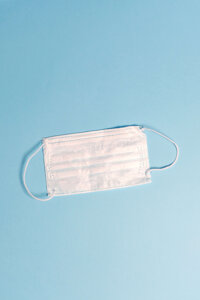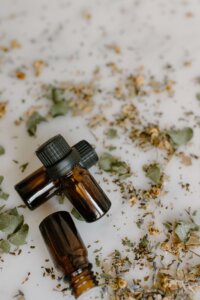Overcoming Maskne

The era of face masks has brought about a new skincare concern – maskne. Mask-induced acne, also known as maskne, has become a prevalent issue for many individuals who wear masks regularly. The prolonged use of masks can trap heat and moisture against the skin, creating a breeding ground for bacteria and clogging pores, leading to breakouts and irritation. In this beauty blog, we will explore effective ways to prevent and treat mask-induced acne, helping you maintain healthy and clear skin while still prioritizing safety and protection.
Choose the Right Mask:
When it comes to preventing maskne, selecting the right mask is essential. Opt for masks made from breathable and soft materials, such as cotton or silk. These materials are gentle on the skin and allow better air circulation, reducing the risk of clogged pores and irritation. On the other hand, masks made of synthetic fabrics can trap more heat and moisture against the skin, increasing the likelihood of breakouts. By choosing a suitable mask, you can provide your skin with a comfortable and safe barrier during mask-wearing.
Wash Your Mask Regularly:
Keeping your mask clean is crucial for preventing mask-induced acne. After each use, make sure to cleanse your mask thoroughly to remove any sweat, bacteria, and oils that may have accumulated during wear. Using a fragrance-free, hypoallergenic detergent can help prevent skin irritation caused by harsh chemicals. If you use disposable masks, ensure you replace them frequently to maintain a fresh and clean barrier, reducing the risk of skin issues.
Keep Your Skin Clean:
Maintaining a consistent skincare routine is the foundation of healthy skin, especially when dealing with maskne. Incorporate gentle cleansing twice a day into your routine. Use a mild, non-comedogenic cleanser that effectively removes impurities without stripping the skin of its natural moisture. This simple step helps prevent the buildup of dirt and bacteria, reducing the risk of mask-induced breakouts and ensuring your skin stays radiant and clear.
Hydrate Your Skin:
Proper hydration is paramount in preventing maskne. Despite the heat and humidity that may accumulate under the mask, it’s essential to use a lightweight, oil-free moisturizer. A well-hydrated skin barrier is less prone to irritation and can better protect itself from external aggressors. Remember to apply your moisturizer generously, paying extra attention to areas that may experience friction from the mask, such as the bridge of your nose and cheeks.
Avoid Heavy Makeup:
As tempting as it may be to maintain your usual makeup routine under the mask, wearing heavy makeup can exacerbate mask-induced acne. Instead, opt for a lightweight, non-comedogenic foundation or tinted moisturizer. Better yet, consider going makeup-free under your mask. This allows your skin to breathe freely, reducing the risk of clogged pores and inflammation.
Use a Salicylic Acid Cleanser:
Salicylic acid is a potent ingredient for combating acne. Incorporate a salicylic acid cleanser into your routine, as it helps unclog pores and exfoliate dead skin cells. However, be mindful not to overuse it, as excessive exfoliation can lead to skin irritation. Use the cleanser once a day, preferably in the evening, to maintain clear and balanced skin.
Spot Treat with Tea Tree Oil:
Tea tree oil has natural antibacterial properties that can help combat acne. If you notice any emerging breakouts, apply a small amount of diluted tea tree oil to the affected areas as a spot treatment. Be cautious not to apply undiluted tea tree oil directly to your skin, as it may cause irritation. Mix a few drops of tea tree oil with a carrier oil, like jojoba or coconut oil, to ensure safe and effective application.

Take Mask Breaks:
When safe to do so, consider taking short breaks from wearing your mask, allowing your skin to breathe and reducing the potential for friction-induced irritation. Take advantage of opportunities, such as breaks during outdoor activities or when you’re alone in a private area, to remove your mask temporarily. Remember that taking mask breaks in crowded or risky settings is not advisable.
Use a Soothing Face Mask:
Incorporate a soothing face mask into your skincare routine once or twice a week. Look for masks containing ingredients like aloe vera or chamomile, which have calming and nourishing properties. Applying a soothing mask can help alleviate skin irritation caused by wearing a mask for extended periods, leaving your skin refreshed and revitalized.
Consult a Dermatologist:
If maskne persists or becomes severe, seeking advice from a dermatologist is essential. Dermatologists are skincare experts who can provide personalized solutions and treatment options tailored to your specific skin concerns. They can help you navigate through potential triggers, recommend effective skincare products, and suggest treatments to manage and improve your skin’s condition.
Conclusion:
Mask-induced acne, or maskne, is a common skincare concern faced by many of us in today’s mask-wearing world. However, with the right preventive measures and consistent skincare routine, you can overcome maskne and maintain healthy, clear skin. Choosing breathable masks, washing them regularly, and keeping your skin clean and hydrated are essential steps in preventing mask-induced breakouts. Remember to be gentle with your skin, avoid heavy makeup, and use non-comedogenic products to minimize the risk of irritation. By following these tips and seeking professional advice if necessary, you can prioritize both your skin’s health and your safety in these challenging times. Stay vigilant, take care of your skin, and remember that mask-wearing is essential, but maskne doesn’t have to be!

